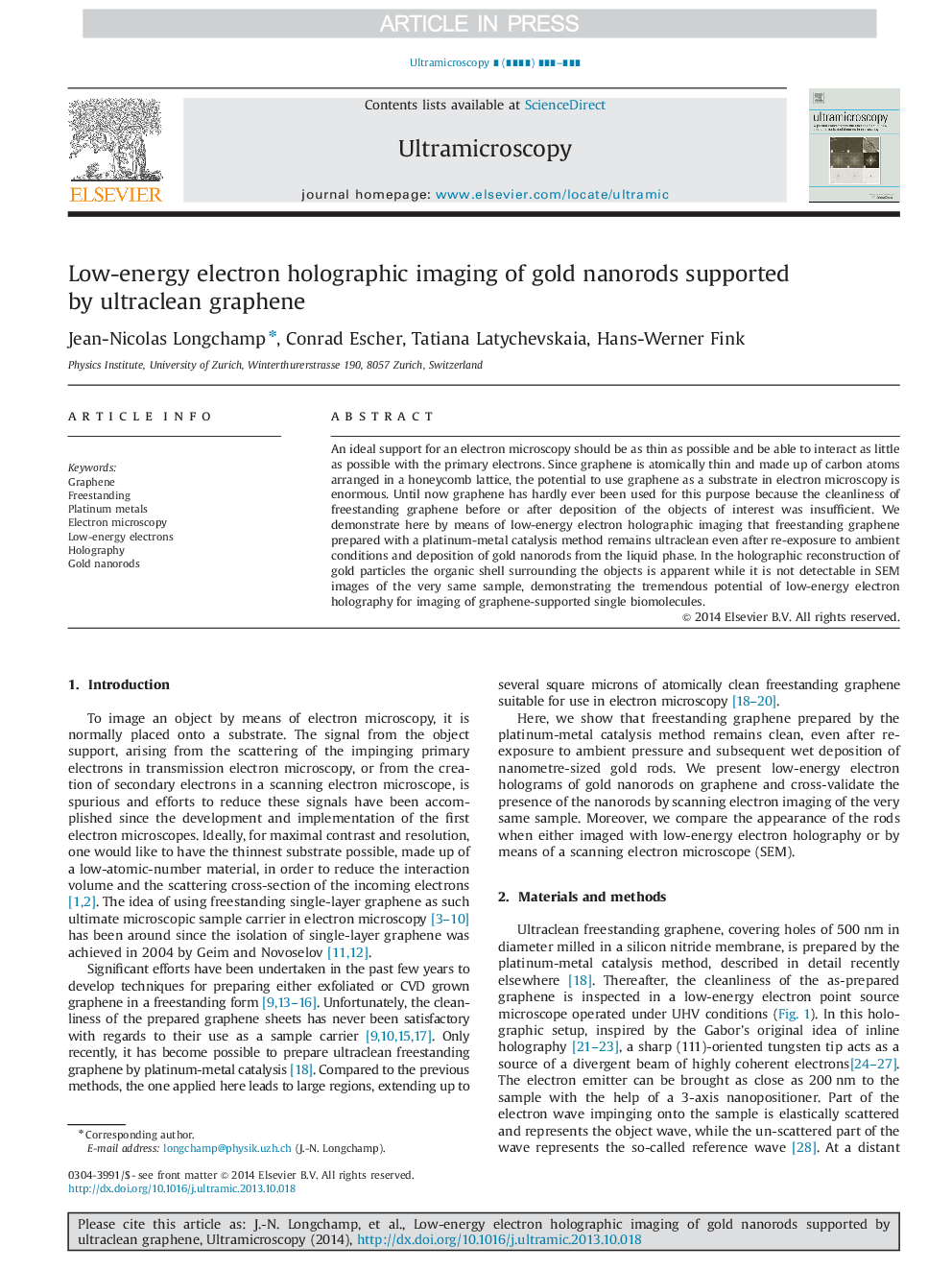| Article ID | Journal | Published Year | Pages | File Type |
|---|---|---|---|---|
| 8038316 | Ultramicroscopy | 2014 | 5 Pages |
Abstract
An ideal support for an electron microscopy should be as thin as possible and be able to interact as little as possible with the primary electrons. Since graphene is atomically thin and made up of carbon atoms arranged in a honeycomb lattice, the potential to use graphene as a substrate in electron microscopy is enormous. Until now graphene has hardly ever been used for this purpose because the cleanliness of freestanding graphene before or after deposition of the objects of interest was insufficient. We demonstrate here by means of low-energy electron holographic imaging that freestanding graphene prepared with a platinum-metal catalysis method remains ultraclean even after re-exposure to ambient conditions and deposition of gold nanorods from the liquid phase. In the holographic reconstruction of gold particles the organic shell surrounding the objects is apparent while it is not detectable in SEM images of the very same sample, demonstrating the tremendous potential of low-energy electron holography for imaging of graphene-supported single biomolecules.
Keywords
Related Topics
Physical Sciences and Engineering
Materials Science
Nanotechnology
Authors
Jean-Nicolas Longchamp, Conrad Escher, Tatiana Latychevskaia, Hans-Werner Fink,
